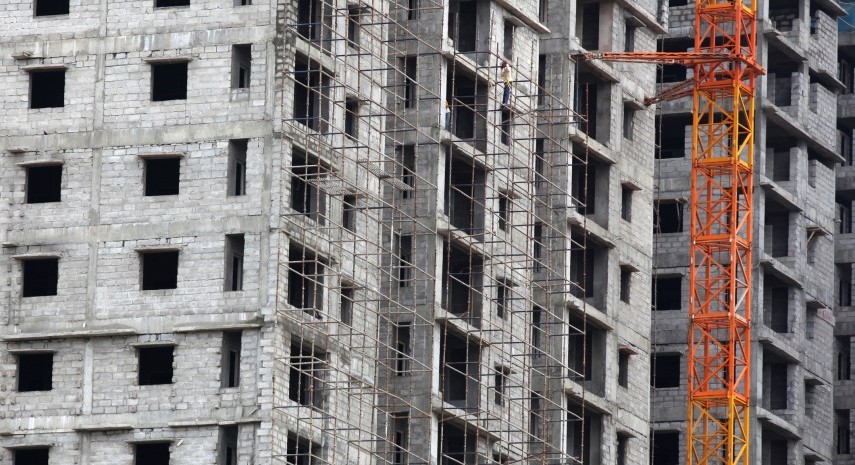Sharing some thoughts which i noted at the launch ( 22nd Sep 2023) of the White Paper on ‘Healthy Affordable Homes for a Sustainable Future’. The panel discussion and attendees included experts from think tanks, financing organisations, academia, builders, and architects.
Very briefly, the background is that this paper, of which the detailed summary was shared with us, has been an outcome of work done over past 3 years by Global Building Performance Network ( GBPN ) and research consortium partners.
The full paper is yet to be uploaded on GBPN website, however a July 2023, summary of it is a good place to start digging deeper if you are interested. (Link below)
These were my main take aways from the event:
Over Crowding is Recognized: The paper is perhaps one of first I have come across which is recognising that highly dense low-income housing being generated by PMAY-urban is not ideal. Most of discussion around low-cost housing generated by Govt. has been around speed of execution, but it feels right that its time to reconsider its quality aspects. Especially since much of the housing units sanctioned by govt. under PMAY-urban are yet to be built.
Healthy Buildings: Healthy buildings (and homes) are in good discussion globally especially after the Covid implications and its unequal impacts on the lower and middle economic strata. I am happy the report carries the word ‘health’ in its title. It will highlight the issue again to the policy makers & market in general, that buildings have a huge impact on health and these considerations require more scientific evaluation. Some case studies of new affordable housing have been done for this paper in Ahmedabad and I think that would be valuable output if part of the main report.
Ventilation: Finally someone mentioned a topic which I find rather very urgent to address in Indian buildings like schools and offices. It’s even an issue for US buildings(refer work of Dr.Joseph P. Allen from Harvard School of Public Health ). Only recently A.S.H.R.A.E is beginning to recognise this issue and update its guidance documents for enhancing ventilation levels. However, its relevant for dense urban homes as well. Adequate ventilation with outdoor fresh air needs to be enhanced to ensure pollutant dispersal and health protection. I learnt that some recommendatory levels of minimum air changes per hour are provided in the full report, and that sounds like a great starting point for building sector. I hope I.S.H.R.A.E is taking this seriously and studying this aspect of Indian buildings.

Lower Density: The report does something controversial , by suggesting decreasing density of low income / affordable housing , multi-story apartments. It suggests lower height limits, more usable open/common/community space. This is great for health, as it will improve quality of open space, more green , more daylight, less noise and better ventilation in these lower density developments. All good, but it will very likely decrease economic profitability of these affordable housing projects for developers. After Covid, reports in media suggest affordable housing construction has slowed down already. Thus this recommendation to decrease density, is expected to meet stiff resistance from developer lobby. I look forward to hear if GBPN is able to actually engage govt. and developer lobby in any meaningful debate on this important suggestion.
Density also has important impact on sustainability at larger scale. Over past two decades the academic discourse of cities has favoured denser cities as per capita environmental impacts can be lowered. Urban sprawl is not preferred. What was not mentioned in the event is, how does the study suggest remaining number of units ( with decreased density ) are managed at city level. Where do they go and what is the impact ? Some serious number crunching and environmental impact assessment at local and city scales is required.
Integrating Various Policies: The white paper tries to find its place in the various policy initiatives already in place for housing in india for e.g. NBC , ECBC-Econiwas , Thermal Comfort in Housing ( RACHNA ) Guidance , Urban Health Policy and many more. It makes me think if the White Paper could have been more deeply focussed on the recommendation of lowering density for affordable housing. This is because it seems to be the single biggest impact suggestion, one which would improve liveability as well as health of residents. The full paper, when available, I hope comes out more strongly supporting this with analysis and numbers. Density is a sensitive topic, and there is no gentle way of suggesting or debating this. I think, at the event, there were no attendees from the Govt. of India ministries/policy makers. That was a missed opportunity, I feel.
Overall, it was a well organised event by a passionate team, but it was not meant for debating the recommendations. I am now looking forward to see real debate on this work, as I think only debate will ensure its full fruition and impact on policy.
Author : Harsh Thapar
Sources:
https://www.gbpn.org/white-paper-launch-healthy-affordable-homes-for-a-sustainable-future/
https://www.gbpn.org/wp-content/uploads/2023/07/Healthy-Buildings-White-Paper-Summary.pdf
